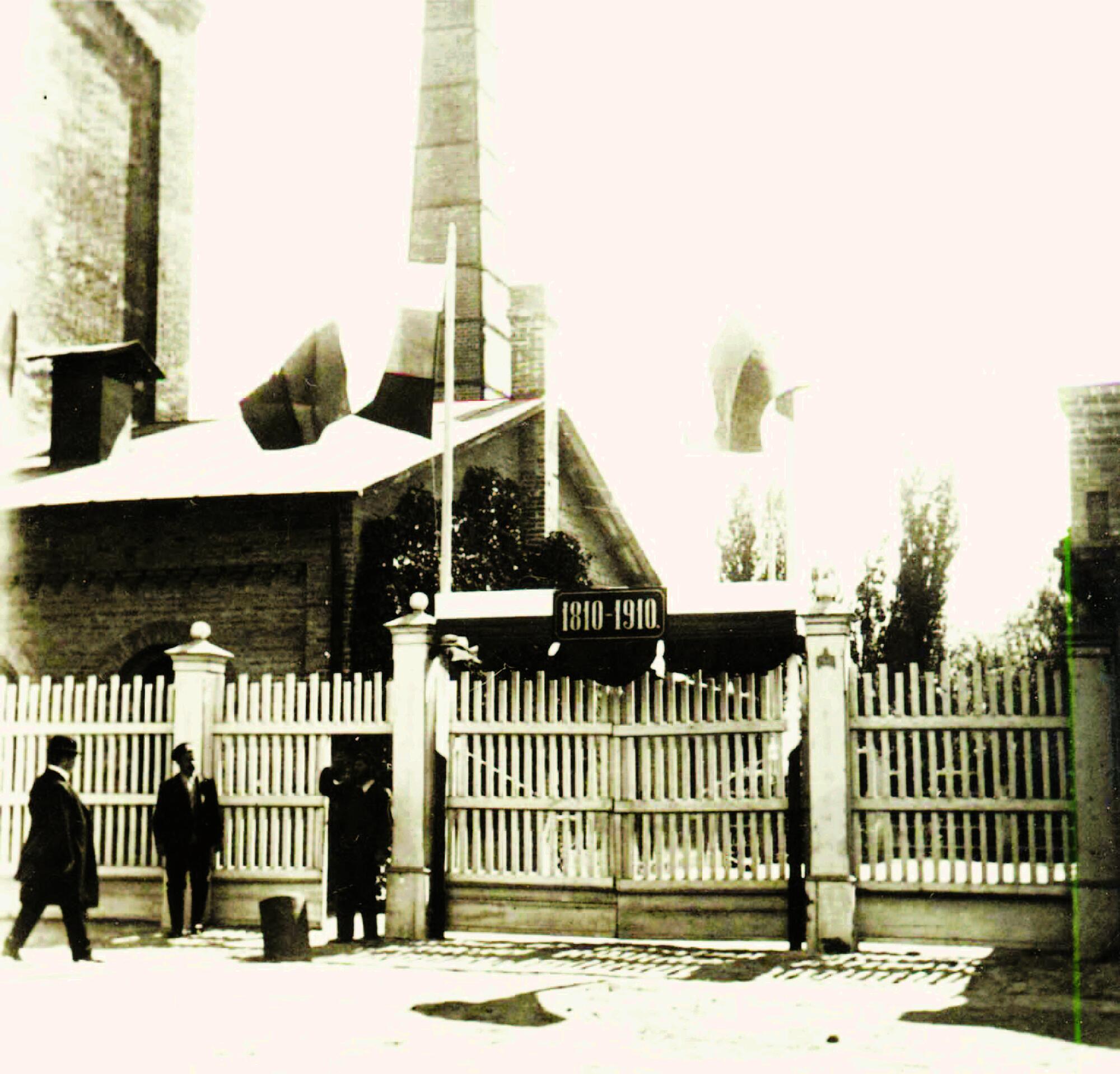This photo shows the facade of the Glitch factory with a festive anniversary sign. The centenary of the mustard industry in Sarepta was widely celebrated, because by 1910 the colony was considered the center of the mustard industry of the Russian Empire.
In 1801, Johann Neitz, a resident of Sarepta, established a hand-made mustard oil mill in his home. The political situation contributed to Neitz commercial success. In 1807, under the terms of the Tilsit Peace, concluded with Napoleonic France, Russia was forced to support the continental blockade of England, a former ally. In this regard the import of British goods, including mustard, was stopped.
Neitz took advantage of the shortage of this product on the tables of the Russian aristocracy and began trial deliveries of mustard to the Asmus Simonsen trading house in St. Petersburg and to the Serensen trading house in Moscow. Thus, Sarepta mustard became known in both capitals.
By 1810, Neitz had built a mustard mill with a horse-drawn mill in Sarepta and expanded production using hired labor. It was the first industrial enterprise in this industry in Russia. The factory installed a mechanical press, steam braziers and other advanced equipment at that time.
Sarepta mustard and mustard oil were highly appreciated by Alexander I personally and his court - for excellent quality, extraordinary strength for table mustard, for the aroma and transparency of the oil.
In 1816, Neitz factory was inherited by the family of his son-in-law Johannes Kaspar Glitch. In 1859 the company ‘J.K. Glitch 's Heirs’ gained the highest right to be called ‘Supplier of the Court of His Imperial Majesty’.
To increase production volumes and reduce production costs in 1856-1857, the brothers Konstantin and Ferdinand Glitch built a new mustard factory with a steam engine in Sarepta. The four-storey red brick building was built on the site of the former bastion of the Sarepta fortress.
On the ground floor there was a steam engine with a boiler, the main flywheel, mustard warehouses, on the second - an oil mill with two hydraulic presses, on the third - a powder shop, on the fourth - sorting and sieves. They installed a water supply system, built a water tower, arranged the territory with the new facilities.
The technical innovations of that time were cargo-passenger elevators, conveyor belts, mechanical graters for hulling grain, steam heating of workshops and premises. In 1905, a 3-storey annex with new technological equipment was erected to the Glitch factory. Multiple modernization of the equipment made it possible to increase the production volume up to 150 tons of mustard oil per year.
In 1801, Johann Neitz, a resident of Sarepta, established a hand-made mustard oil mill in his home. The political situation contributed to Neitz commercial success. In 1807, under the terms of the Tilsit Peace, concluded with Napoleonic France, Russia was forced to support the continental blockade of England, a former ally. In this regard the import of British goods, including mustard, was stopped.
Neitz took advantage of the shortage of this product on the tables of the Russian aristocracy and began trial deliveries of mustard to the Asmus Simonsen trading house in St. Petersburg and to the Serensen trading house in Moscow. Thus, Sarepta mustard became known in both capitals.
By 1810, Neitz had built a mustard mill with a horse-drawn mill in Sarepta and expanded production using hired labor. It was the first industrial enterprise in this industry in Russia. The factory installed a mechanical press, steam braziers and other advanced equipment at that time.
Sarepta mustard and mustard oil were highly appreciated by Alexander I personally and his court - for excellent quality, extraordinary strength for table mustard, for the aroma and transparency of the oil.
In 1816, Neitz factory was inherited by the family of his son-in-law Johannes Kaspar Glitch. In 1859 the company ‘J.K. Glitch 's Heirs’ gained the highest right to be called ‘Supplier of the Court of His Imperial Majesty’.
To increase production volumes and reduce production costs in 1856-1857, the brothers Konstantin and Ferdinand Glitch built a new mustard factory with a steam engine in Sarepta. The four-storey red brick building was built on the site of the former bastion of the Sarepta fortress.
On the ground floor there was a steam engine with a boiler, the main flywheel, mustard warehouses, on the second - an oil mill with two hydraulic presses, on the third - a powder shop, on the fourth - sorting and sieves. They installed a water supply system, built a water tower, arranged the territory with the new facilities.
The technical innovations of that time were cargo-passenger elevators, conveyor belts, mechanical graters for hulling grain, steam heating of workshops and premises. In 1905, a 3-storey annex with new technological equipment was erected to the Glitch factory. Multiple modernization of the equipment made it possible to increase the production volume up to 150 tons of mustard oil per year.




